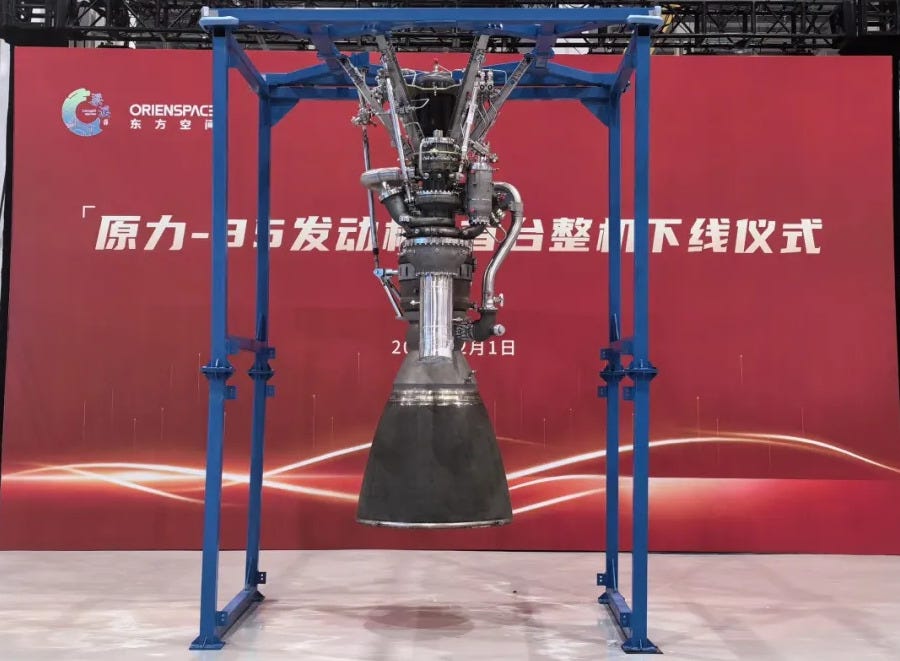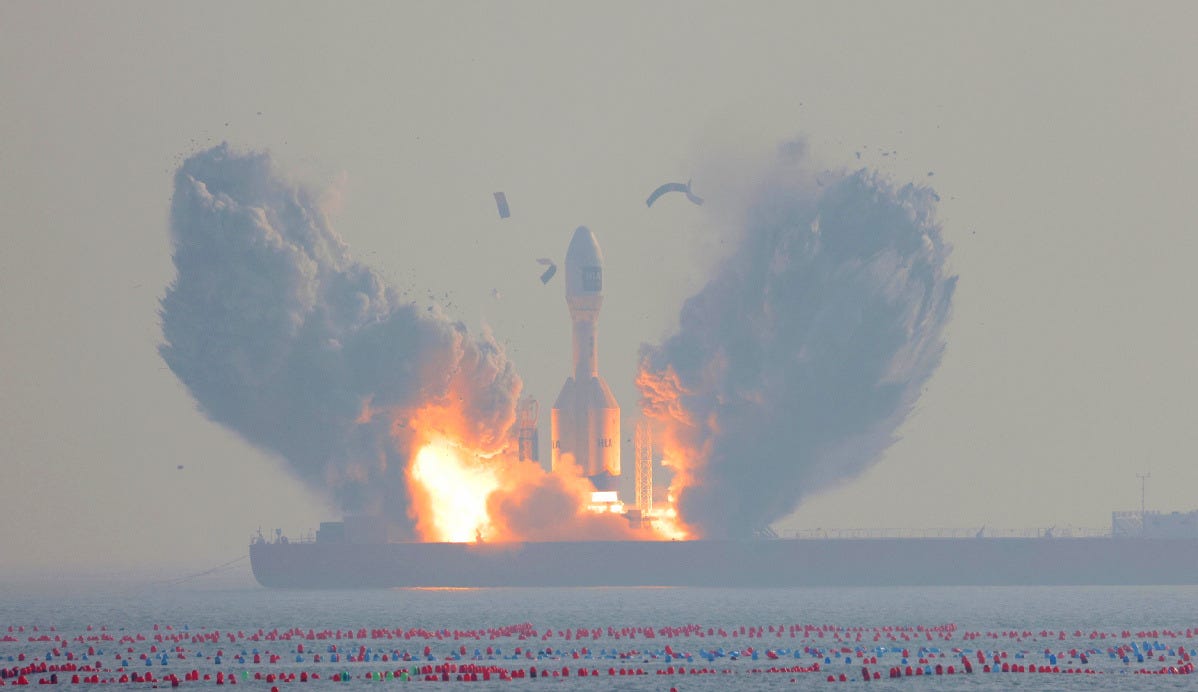Where is OrienSpace?
Hailed as "China's answer to SpaceX", the company hasn't flown much.

In a recent interview with CCTV13, an OrienSpace official stated that Gravity-2 will now debut at the end of the year, while the Gravity-3 tri-core variant will fly in 2027. This is a big delay for each as Gravity-2 will likely be pushed to next year with current progress.
So far OrienSpace has not been specific with its timelines regarding its reusable launch vehicle, since its leadership said tests would be underway by March 2024. But a few small tests were conducted with engine hardware.
Those tests are with the YuanLi-110 (原力-110), or Force-110, engine. Back in December 2023, when the engine was still known as YuanLi-85, a preburner test was conducted at Space Pioneer’s Gongyi engine test facility. A year later in December 2024, another test was conducted, this time with the engine’s gas generator to verify reliability and propellant injection.
A complete engine, then still called YuanLi-85, was supposedly shown off in February 2024, however it has not seen any testing and could be non-functional internally.
Not helping OrienSpace are the variants of Gravity-2, as well as Gravity-3. Mainly that four different versions of the first-stage boosters will have to be produced. A single-core booster version, a solid rocket booster strap-on version, a tri-core center booster version, and tri-core booster versions.
This could be mitigated if the company opts to build a single, substantially less performant, first-stage booster version. SpaceX has had this problem too, as the Falcon Heavy center core requires reinforcements to withstand the vehicle’s thrust of the three boosters while supporting a fully-fuelled second-stage. Lengthy hardware changes are also needed to fly a Falcon Heavy side booster as a Falcon 9 first-stage, and vice versa.

Financing-wise, OrienSpace has raised around 144 million United States Dollars via two funding rounds. The first in 2022 provided 60 million for the development of Gravity-1 and now what is the YuanLi engine, followed by a second in 2024 with around 83.5 million for Gravity-2.
Despite the challenges in developing reusable rockets, the company does have an operational rocket to generate some revenue, at least on paper. That launch vehicle, Gravity-1, has a boasted payload capacity of 6,500 kilograms, and has four stages of solid rocket motors.
The solid-fuelled Gravity-1 made its debut flight back in January 2024, generating an insane 600 tons of thrust to lift the 405-ton vehicle into low Earth orbit. Following the debut flight, OrienSpace’s Co-Chief Executive Officer, and Co-Founder too, Yao Song (姚颂) said that the rocket would fly three times in 2024. Followed by 2025 and 2026 where the vehicle would fly between eight to ten times.
As we are now in late March 2025, those goals have quite evidently not been met. Additionally since August 2024, some of the solid rocket motors needed for the Gravity-1 Y2 mission were being prepared. It is unknown why more solid motors from the company’s provider, one of which is the state-owned Academy of Aerospace Solid Propulsion Technology (航天动力技术研究院), have not made their way to OrienSpace.
Part of these problems can be pinned on OrienSpace while others are partly out of their control. The little progress despite the large funding is on the company, as others have done more with less and did not choose to build such a large first rocket. Meanwhile, the company has little control over its launch ship and vehicle stacking building at the Haiyang sea-launch spaceport.
Despite this, OrienSpace has been hailed by SpaceNews, whose focus is informing Western policymakers, as “China’s answer to SpaceX” in a podcast with Yao Song last month.
Alongside all this, it doesn’t help that the company has been remarkably quiet too compared to its competitors.
Instrument pivot?
If you visit the Chinese version of OrienSpace’s website it is evident that the company is offering more than space launch services. Beyond the Gravity series of rockets, OrienSpace is providing a range of advanced aerospace technologies, including high-speed data links, flight control and telemetry systems, and digital simulation platforms.
Their Hongli L-Series (鸿力L系列) of instruments focuses on secure, high-speed communication networks for UAVs, target drones, and other high-speed aerial vehicles. These data links offer real-time, low-latency transmission of telemetry, video, and control signals, making them suitable for military applications such as drone swarms and missile guidance.
The Hongli T-Series (鸿力T系列) of instruments is dedicated to rocket control and measurement, featuring onboard avionics, telemetry receivers, tracking stations, and secure communication systems. The real-time monitoring and secure data transmission capabilities make them key for both defense applications and commercial space missions requiring precise tracking and control.
Lastly, OrienSpace has developed the ODS, OrienDigiSpace, (ODS东方数字空间) system, a simulation platform that supports the entire various stages of aerospace vehicle development. This includes digital twin technology, hardware-in-the-loop testing, and real-time simulation for aircraft, rockets, and spacecraft.
As is hopefully evident, OrienSpace is positioning itself to continue operations outside of space launch services, selling to whomever needs aerospace instruments in China. Selling instruments is not a bad business decision given China’s push for a low-altitude economy, and it helps that some of these were proven with Gravity-1’s flight.




